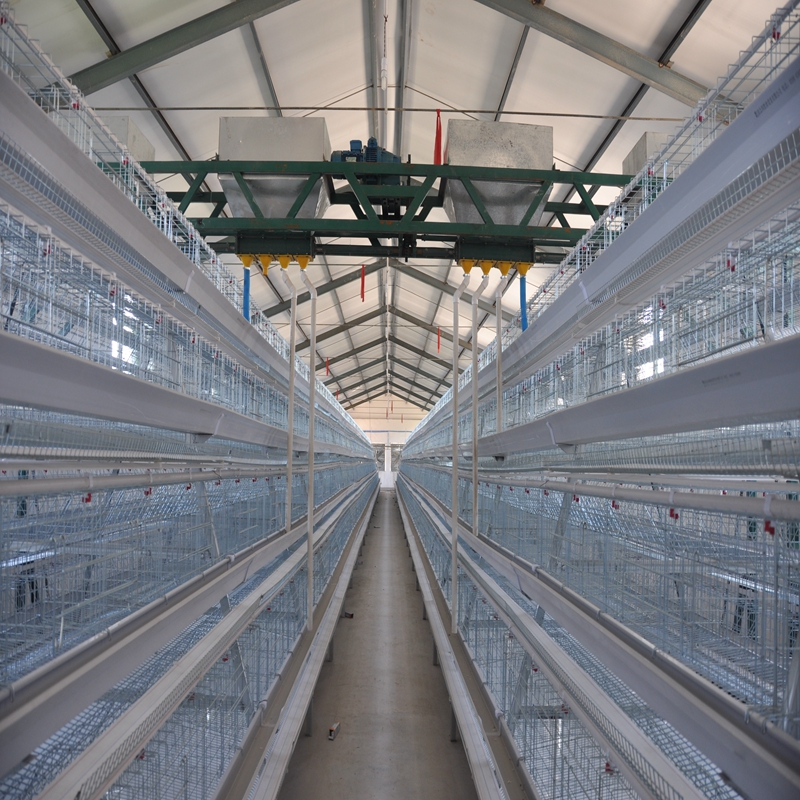Building a Multi-Level Rabbit Habitat for Enhanced Comfort and Space Efficiency
Dec . 10, 2024 19:57 Back to list
Building a Multi-Level Rabbit Habitat for Enhanced Comfort and Space Efficiency
Stacking Rabbit Cages An Efficient Approach for Breeders
In the world of rabbit breeding, providing a safe and comfortable environment for these animals is of utmost importance. One innovative solution that has gained popularity among breeders is the use of stacking rabbit cages. These modular cages not only optimize space but also enhance the overall efficiency of breeding operations. In this article, we will explore the advantages of stacking rabbit cages, considerations for their use, and best practices for maintaining the health and well-being of rabbits in such setups.
Advantages of Stacking Rabbit Cages
One of the primary benefits of stacking rabbit cages is space efficiency. Breeders often face spatial limitations, especially when managing a large number of rabbits. Stacking cages allows for vertical utilization of space, which means breeders can house more rabbits in a smaller footprint. This can be particularly advantageous in urban or suburban settings where space is at a premium.
Another advantage is the ease of management that comes with a stacked system. Cleaning and feeding can be streamlined, as multiple levels of cages can be accessed from a single location. This reduces the amount of time and effort required for daily maintenance tasks, allowing breeders to focus more on the health and breeding prospects of their animals. Additionally, the design often facilitates better air circulation, which is crucial for maintaining a healthy environment and preventing issues such as respiratory infections.
Considerations for Using Stacking Cages
While stacking rabbit cages can offer numerous benefits, there are several important factors to consider. First and foremost is the safety and comfort of the rabbits. It is essential to ensure that each cage is appropriately sized for the rabbits it will house, taking into account their breed and size. Rabbits need enough space to move around freely, stretch, and perform their natural behaviors. Overcrowding can lead to stress and aggression among rabbits, negating the benefits of a stacking system.
Furthermore, proper ventilation is crucial. Stacked cages should be designed to allow for sufficient airflow to prevent the buildup of ammonia and odors, which can harm rabbits' respiratory systems. Breeders should also be aware of potential heat accumulation in stacked systems, particularly in warmer climates. Providing adequate shade and temperature control is vital to prevent overheating.
stacking rabbit cage

Hygiene is another key consideration. Stacked cages can be more prone to the spread of disease if not maintained properly. Regular cleaning schedules should be established, and cages should be thoroughly disinfected between batches of rabbits. It’s also advisable to have a good separation between cages to minimize contact and potential disease transmission.
Best Practices for Maintaining Rabbit Health
To ensure the health and well-being of rabbits in stacked cages, breeders should adhere to several best practices. Regular health checks are essential to monitor for signs of illness or distress. Keeping a consistent feeding schedule and providing a balanced diet composed of hay, fresh vegetables, and pellets is crucial for maintaining optimal rabbit health.
Social interaction is also vital. While stacked cages can limit direct contact between rabbits, breeders should provide opportunities for socialization during supervised playtime outside of the cages. This not only helps reduce stress but also encourages natural behaviors, which are important for mental well-being.
Finally, proper record-keeping is essential in any breeding operation. Keeping track of health records, breeding cycles, and individual traits can help breeders make informed decisions that ultimately enhance their breeding programs.
Conclusion
Stacking rabbit cages represent a practical and efficient solution for rabbit breeders looking to optimize their space and streamline their operations. However, these advantages can only be realized by addressing the specific needs of the rabbits and implementing best practices for their care. By prioritizing the health, comfort, and well-being of rabbits, breeders can create a successful and sustainable breeding environment that benefits both the animals and the breeders themselves. Ultimately, thoughtful implementation of stacking cage systems can lead to thriving rabbits and prosperous breeding practices.
-
Hot Sale 24 & 18 Door Rabbit Cages - Premium Breeding Solutions
NewsJul.25,2025
-
Automatic Feeding Line System Pan Feeder Nipple Drinker - Anping County Yize Metal Products Co., Ltd.
NewsJul.21,2025
-
Automatic Feeding Line System Pan Feeder Nipple Drinker - Anping County Yize Metal Products Co., Ltd.
NewsJul.21,2025
-
Automatic Feeding Line System - Anping Yize | Precision & Nipple
NewsJul.21,2025
-
Automatic Feeding Line System - Anping Yize | Precision & Nipple
NewsJul.21,2025
-
Automatic Feeding Line System-Anping County Yize Metal Products Co., Ltd.|Efficient Feed Distribution&Customized Animal Farming Solutions
NewsJul.21,2025






